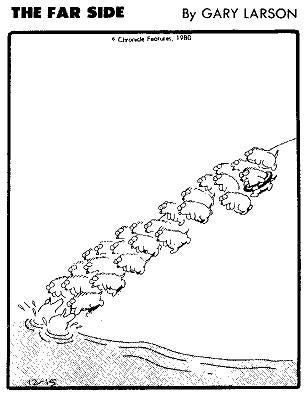
Lemmings, by contrast, are conspicuously colored and behave aggressively towards predators and even human observers. It is not known why lemming populations fluctuate with such great variance roughly every four years, before numbers drop to near extinction.Lemming behavior and appearance are markedly different from those of other rodents, which are inconspicuously colored and try to conceal themselves from their predators. The Norway lemming and brown lemming are two of the few vertebrates which reproduce so quickly that their population fluctuations are chaotic,rather than following linear growth to a carrying capacity or regular oscillations. Like many other rodents, lemmings have periodic population booms and then disperse in all directions, seeking the food and shelter their natural habitats cannot provide. They are solitary animals by nature, meeting only to mate and then going their separate ways, but like all rodents, they have a high reproductive rate and can breed rapidly when food is plentiful. They remain active, finding food by burrowing through the snow and using grasses clipped and stored in advance. Lemmings do not hibernate through the harsh northern winter. Like other rodents, their incisors grow continuously, allowing them to exist on much tougher forage than would otherwise be possible. At times, they will eat grubs and larvae. They are herbivorous, feeding mostly on leaves and shoots, grasses, and sedges in particular, but also on roots and bulbs.


They generally have long, soft fur, and very short tails. Lemmings weigh from 30 to 110 g (1 to 4 oz) and are about 7 to 15 cm (3 to 6 in) long. They make up the subfamily Arvicolinae (also known as Microtinae) together with voles and muskrats, which forms part of the superfamily Muroidea, which also includes rats, mice, hamsters, and gerbils. In Popular Culture and Media Misconceptions Behaviors Description and Habitat LemmingĪ lemming is a small rodent usually found in or near the Arctic in tundra biomes.


 0 kommentar(er)
0 kommentar(er)
